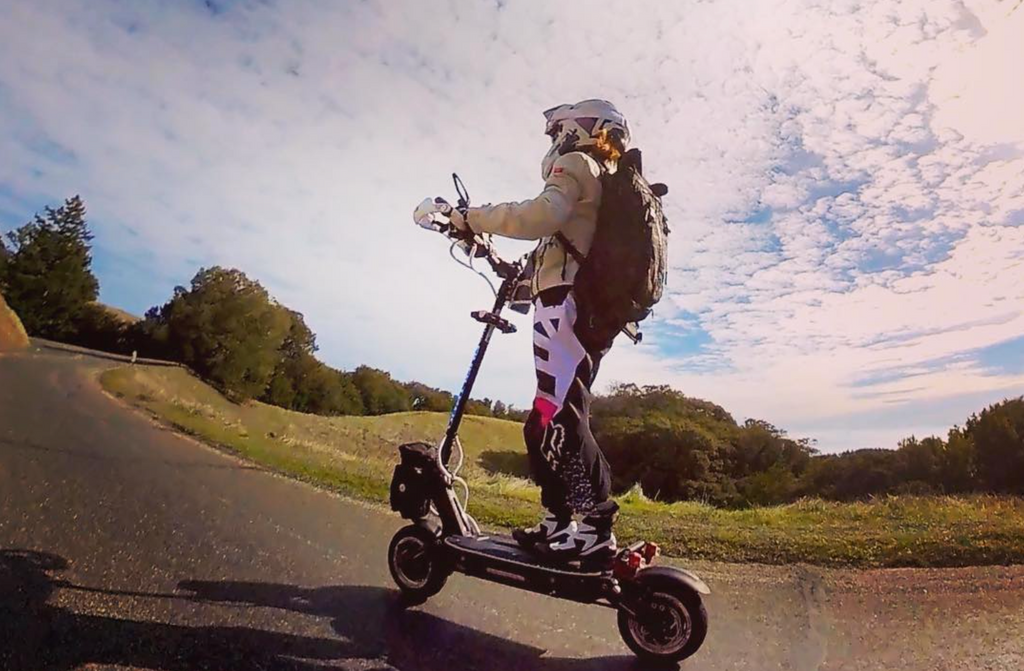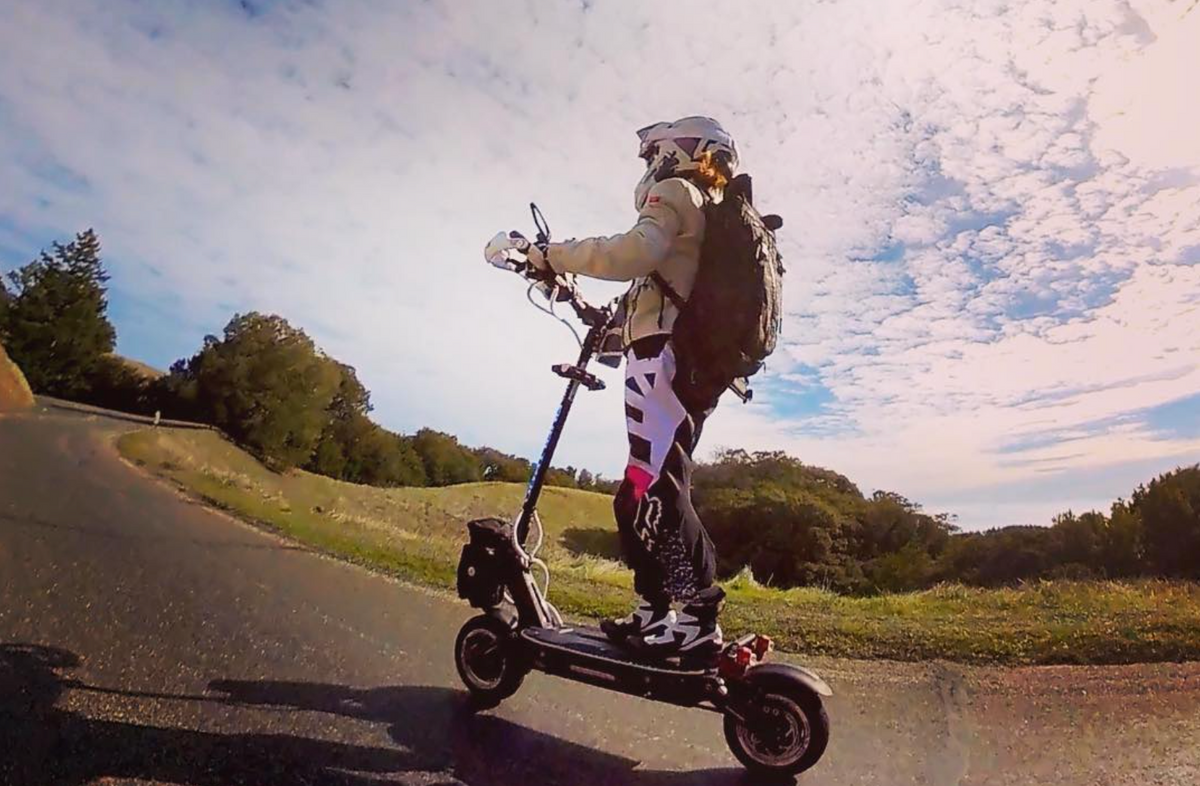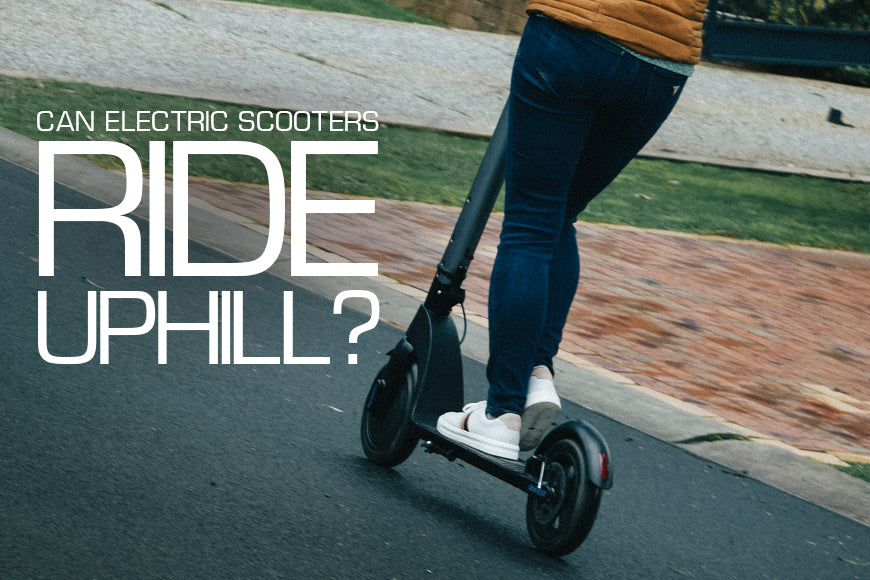Yes, electric scooters can climb hills. The ability depends on the scooter’s motor power, battery capacity, and hill gradient.
Electric scooters are becoming increasingly popular for urban commuting. They offer a convenient and eco-friendly mode of transportation. Not all electric scooters are created equal, though. Some models are specifically designed to handle steep inclines. Factors like motor power, torque, and battery life significantly impact their hill-climbing abilities.
A powerful motor and high-capacity battery ensure better performance on hilly terrains. Before purchasing an electric scooter, check its specifications and user reviews to ensure it meets your needs. Investing in a high-quality scooter can make a significant difference in uphill performance and overall ride experience.

Credit: alienrides.com
Introduction To Electric Scooters
Electric scooters have changed the way we travel. They are easy to use and eco-friendly. Many people use them for short trips. But can these scooters climb hills? Let’s find out.
Rise In Popularity
Electric scooters are now very popular. More people use them every day. They are cheaper than cars and bikes. Many cities have scooter-sharing programs. This makes them easy to access. People love them for their convenience.
Basic Mechanics
Electric scooters have simple parts. They use a battery and motor. The battery powers the motor to move the scooter. Some scooters have strong motors. These can climb small hills. The weight of the rider also matters. Heavier riders may find it harder to climb hills.
Here is a simple table to show some basic parts:
| Part | Function |
|---|---|
| Battery | Powers the scooter |
| Motor | Moves the scooter |
| Wheels | Help in movement |
| Frame | Supports the rider |
- Lightweight design helps in climbing hills.
- Strong motors are better for steep slopes.
- Proper maintenance ensures better performance.
Hill Climbing Capabilities
Electric scooters are becoming popular for daily commuting. A key feature is their hill climbing capabilities. Not all scooters can handle steep inclines. Let’s explore what makes a scooter great for hills.
Motor Power
The motor power is crucial for climbing hills. Scooters with higher wattage motors perform better on inclines. Look for scooters with at least 250 watts. For steep hills, 500 watts or more is ideal.
| Motor Power | Hill Climbing Capability |
|---|---|
| 250 Watts | Gentle slopes |
| 500 Watts | Moderate hills |
| 750 Watts | Steep hills |
Battery Life
Battery life affects hill climbing performance. A powerful battery ensures consistent power. Check the scooter’s battery capacity, measured in ampere-hours (Ah). Higher Ah means longer battery life.
Also, consider the battery type. Lithium-ion batteries are lightweight and efficient. They offer better performance for hill climbing.
- Choose a scooter with a high-capacity battery.
- Lithium-ion batteries provide better hill performance.
Maintaining your scooter’s battery is crucial. Charge it regularly and avoid overcharging. This helps the scooter perform better on hills.
Factors Affecting Performance
Can electric scooters climb hills? The answer is yes, but several factors affect their performance. Understanding these factors can help you make the most out of your electric scooter.
Incline Angle
The angle of the incline plays a crucial role in hill-climbing ability. Steeper hills require more power. Most electric scooters handle inclines of 10-15 degrees well. For steeper hills, ensure your scooter has a powerful motor.
| Incline Angle | Motor Power Required |
|---|---|
| 0-10 degrees | 250W – 300W |
| 10-15 degrees | 300W – 500W |
| 15-20 degrees | 500W and above |
Rider Weight
The weight of the rider also impacts performance. Heavier riders require more power to climb hills. Scooters have a weight limit, usually between 220-265 pounds.
- Below 150 pounds: Most scooters perform well.
- 150-200 pounds: Look for scooters with at least 300W power.
- Above 200 pounds: Opt for scooters with 500W or more.
Always check the manufacturer’s weight recommendations. This ensures optimal performance and safety.

Credit: www.voromotors.com
Types Of Electric Scooters
Electric scooters come in various types. Each type serves a different purpose. Knowing the right type can make your ride smoother, especially on hills.
Commuter Models
Commuter models are ideal for daily use. They are lightweight and easy to handle. These scooters usually have smaller motors. They work well on flat surfaces and gentle slopes. If your route includes steep hills, commuter models might struggle. They are best for city rides and short distances.
| Feature | Details |
|---|---|
| Motor Power | 250W – 500W |
| Battery Life | 15 – 25 miles |
| Weight | 20 – 30 lbs |
High-performance Models
High-performance models are built for power. They have stronger motors and better battery life. These scooters can tackle steep hills with ease. They are heavier but provide a smoother ride. Perfect for long commutes and challenging terrains.
| Feature | Details |
|---|---|
| Motor Power | 500W – 2000W |
| Battery Life | 30 – 60 miles |
| Weight | 30 – 50 lbs |
- Motor Power: Higher wattage means better hill climbing.
- Battery Life: Longer rides with more power.
- Weight: Heavier but stable on steep paths.
Real-world Testing
Real-world testing is essential to understand the true capabilities of electric scooters. Many scooters claim they can climb hills, but how do they perform in real scenarios? This section explores how electric scooters handle different environments, including urban and rural terrains.
Urban Environments
Urban areas are filled with various inclines and declines. Electric scooters must navigate these smoothly. City streets often have short, steep hills. Scooters with powerful motors and good battery life excel here.
Battery life is crucial in cities. Traffic lights and frequent stops can drain the battery. Motor power also matters. A 250W motor might struggle on steep streets. A 500W motor performs better.
Many riders in cities face crowded streets. Scooters need to be nimble. A lightweight scooter is easier to handle. Suspension systems help absorb shocks from uneven surfaces. This makes the ride comfortable.
Rural Terrains
Rural areas present different challenges. Hills here are often longer and steeper. Electric scooters need more power and endurance. A scooter with a 750W motor or higher is ideal.
Battery range is even more important in rural areas. Scooters should have a longer range to cover distances without frequent charging. Look for models with large-capacity batteries.
Terrain types in rural areas vary. There are dirt roads, gravel paths, and paved roads. Scooters with larger tires and good traction perform better on these surfaces. All-terrain tires are a good choice.
| Feature | Urban Environments | Rural Terrains |
|---|---|---|
| Motor Power | 250W – 500W | 750W+ |
| Battery Life | Medium (due to stops) | Long (for longer distances) |
| Tires | Standard | All-terrain |
| Suspension | Important for comfort | Important for rough terrain |
Real-world testing shows that different environments require different features. Choose your electric scooter based on where you will ride most.
Comparing Brands
Electric scooters are gaining popularity for their convenience and eco-friendliness. But can they handle hills? Let’s compare brands to see which ones climb hills the best. We’ll look at top performers and budget options to help you make an informed choice.
Top Performers
Top-performing electric scooters excel at hill climbing. They have powerful motors and durable batteries.
| Brand | Motor Power | Battery Capacity | Hill Grade |
|---|---|---|---|
| Xiaomi Mi Pro 2 | 600W | 12,800mAh | 20% |
| Segway Ninebot Max | 350W | 15,300mAh | 15% |
| Dualtron Thunder | 5,400W | 60V 35Ah | 45% |
Budget Options
Budget-friendly electric scooters can also tackle hills. They are ideal for shorter, less steep climbs.
- GoTrax GXL V2: 250W motor, 36V 5.2Ah battery, 14% hill grade.
- Razor E300: 250W motor, 24V 7Ah battery, 10% hill grade.
- Hiboy S2: 350W motor, 36V 7.5Ah battery, 15% hill grade.
Tips For Better Hill Climbing
Climbing hills with an electric scooter can be a challenge. But with the right tips, it’s easier. Here are some essential tips to help you climb hills better.
Optimal Speed
Maintaining the right speed is crucial for hill climbing. Start slow and steady. Fast speeds can drain the battery quickly. Slow speeds help keep control. Consistency is key. Avoid sudden speed changes. This ensures smooth climbing.
Battery Management
Your scooter’s battery level affects hill climbing. Always check battery before a climb. A full battery gives better power. Plan your route. Avoid hills if the battery is low. Use eco mode if available. It saves battery and provides stable power.
Here are some quick tips for battery management:
- Charge the battery fully before trips.
- Avoid steep hills with a low battery.
- Turn off unnecessary features like lights.
Future Of Electric Scooters
The future of electric scooters is bright and full of promise. With evolving technology, these scooters are becoming more powerful and efficient. They are now capable of climbing hills with ease. This makes them a great choice for urban commuters.
Technological Advances
Electric scooters have seen significant technological advances. The most important improvements are in battery technology and motor efficiency. Modern batteries can store more energy. This means scooters can travel longer distances without needing a charge.
Motors have also become more powerful. Many scooters now use brushless motors. These motors are more efficient and durable. They provide better performance on steep hills. Additionally, advanced controllers help manage power distribution. This ensures that the scooter can handle inclines smoothly.
Market Trends
The electric scooter market is growing rapidly. More people are choosing electric scooters for their daily commute. This is due to their environmental benefits and cost savings. Many cities are supporting this trend by adding scooter-friendly infrastructure.
There is also an increase in shared scooter programs. These programs make it easy for people to use scooters without owning one. This has led to more people experiencing the benefits of electric scooters.
Manufacturers are responding to market demands by producing more versatile models. These new models can handle various terrains, including hills. They are also focusing on improving safety features. This includes better brakes, lights, and stability controls.
| Feature | Improvement |
|---|---|
| Battery | Longer Range |
| Motor | More Power |
| Safety | Enhanced Features |

Credit: alienrides.com
Frequently Asked Questions
Which Electric Scooter Is Best For Hills?
The Dualtron Thunder is the best electric scooter for hills. It offers powerful motors and strong climbing capabilities.
Can A Segway Scooter Go Up Hill?
Yes, a Segway scooter can go uphill. It handles inclines up to 20 degrees, depending on the model and weight load.
What Is The Max Incline On Electric Scooters?
The maximum incline electric scooters can handle typically ranges from 10 to 30 degrees, depending on the model.
Can Mobility Scooters Go Up Steep Hills?
Yes, some mobility scooters can go up steep hills. Check the scooter’s specifications for maximum incline capability.
Conclusion
Electric scooters can indeed climb hills, depending on their motor power and battery capacity. Choose a model with strong specifications for hill riding. Always consider the terrain and your weight for optimal performance. With the right scooter, hill climbing becomes a breeze, making your commute more enjoyable.

